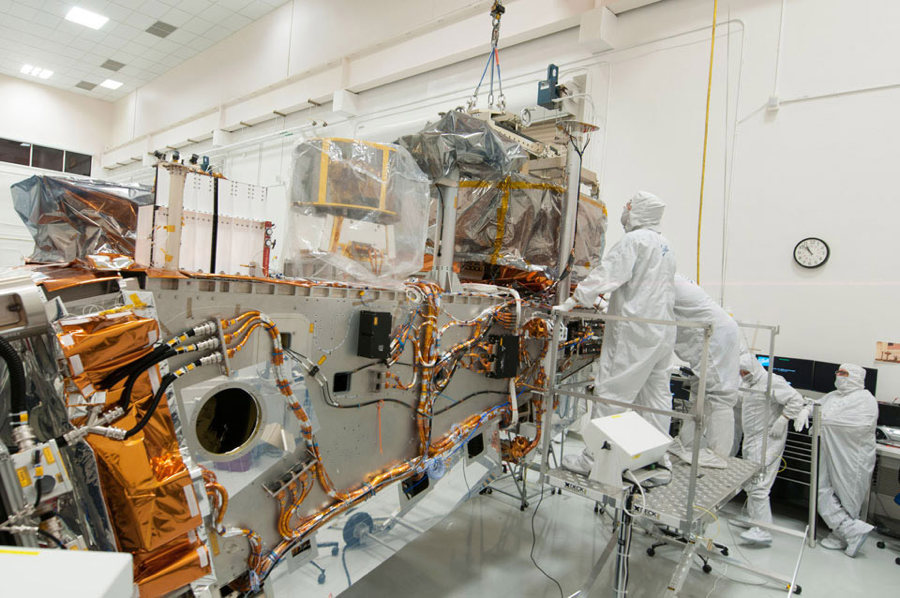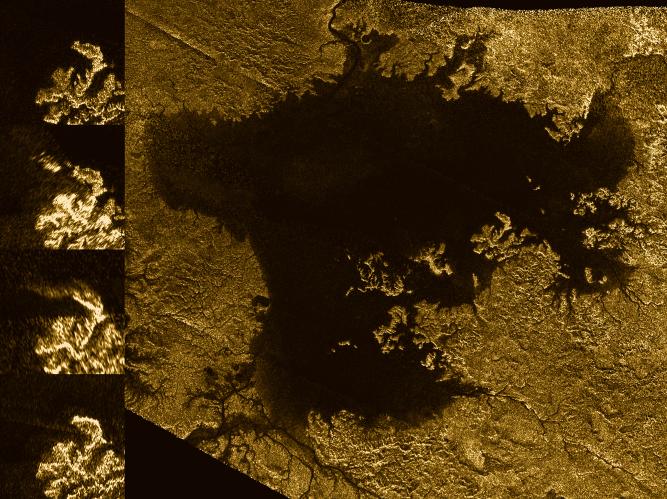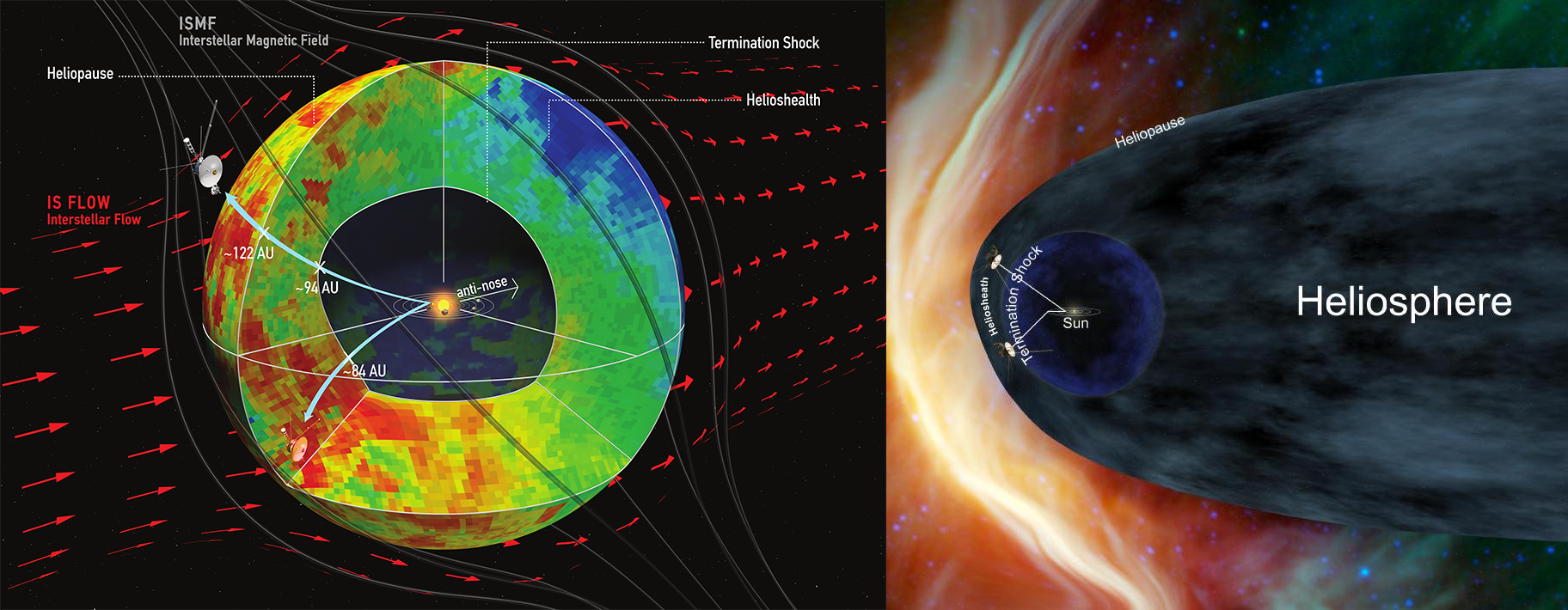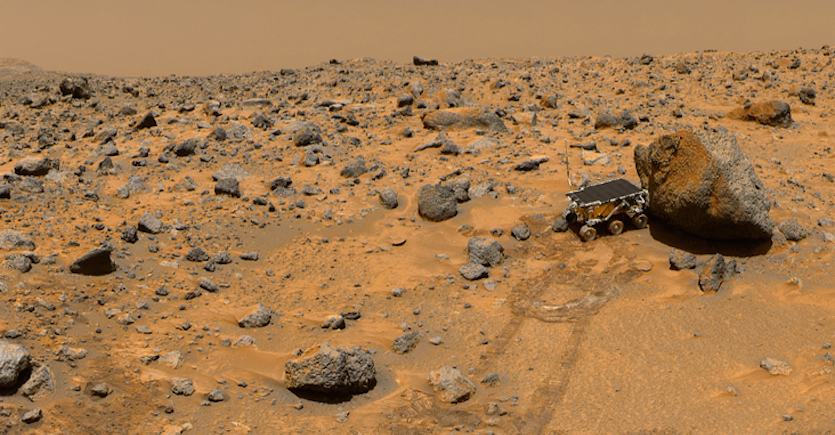Next Launch
Total Students
2,609
Total Launches
683
Eggs Survived
418 61.2%
Rockets Survived
536 78.5%
April 1, 2017
NOAA's Joint Polar Satellite System (JPSS) to Monitor Earth
by Ethan Siegel
Later this year, an ambitious new Earth-monitoring satellite will launch into a polar orbit around our planet. The new satellite--called JPSS-1--is a collaboration between NASA and NOAA. It is part of a mission called the Joint Polar Satellite System, or JPSS.
At a destination altitude of only 824 km, it will complete an orbit around Earth in just 101 minutes, collecting extraordinarily high-resolution imagery of our surface, oceans and atmosphere. It will obtain full-planet coverage every 12 hours using five separate, independent instruments. This approach enables near-continuous monitoring of a huge variety of weather and climate phenomena.
JPSS-1 will improve the prediction of severe weather events and will help advance early warning systems. It will also be indispensable for long-term climate monitoring, as it will track global rainfall, drought conditions and ocean properties.
The five independent instruments on board are the main assets of this mission:
- The Cross-track Infrared Sounder (CrIS) will detail the atmosphere's 3D structure, measuring water vapor and temperature in over 1,000 infrared spectral channels. It will enable accurate weather forecasting up to seven days in advance of any major weather events.
- The Advanced Technology Microwave Sounder (ATMS) adds 22 microwave channels to CrIS's measurements, improving temperature and moisture readings.
- Taking visible and infrared images of Earth's surface at 750 meter resolution, the Visible Infrared Imaging Radiometer Suite (VIIRS) instrument will enable monitoring of weather patterns, fires, sea temperatures, light pollution, and ocean color observations at unprecedented resolutions.
- The Ozone Mapping and Profiler Suite (OMPS) will measure how ozone concentration varies with altitude and in time over every location on Earth's surface. This can help us understand how UV light penetrates the various layers of Earth's atmosphere.
- The Clouds and the Earth's Radiant System (CERES) instrument will quantify the effect of clouds on Earth's energy balance, measuring solar reflectance and Earth's radiance. It will greatly reduce one of the largest sources of uncertainty in climate modeling.
The information from this satellite will be important for emergency responders, airline pilots, cargo ships, farmers and coastal residents, and many others. Long and short term weather monitoring will be greatly enhanced by JPSS-1 and the rest of the upcoming satellites in the JPSS system.
Want to teach kids about polar and geostationary orbits? Go to the NASA Space Place: https://spaceplace.nasa.gov/geo-orbits/
This article is provided by NASA Space Place. With articles, activities, crafts, games, and lesson plans, NASA Space Place encourages everyone to get excited about science and technology. Visit spaceplace.nasa.gov to explore space and Earth science!
This article was provided by the Jet Propulsion Laboratory, California Institute of Technology, under a contract with the National Aeronautics and Space Administration.
 Ball and Raytheon technicians integrate the VIIRS Optical and Electrical Modules onto the JPSS-1 spacecraft in 2015. The spacecraft will be ready for launch later this year. Credit: Ball Aerospace & Technologies Corp.
Ball and Raytheon technicians integrate the VIIRS Optical and Electrical Modules onto the JPSS-1 spacecraft in 2015. The spacecraft will be ready for launch later this year. Credit: Ball Aerospace & Technologies Corp.
May 1, 2017
The Fizzy Seas of Titan
by Marcus Woo
With clouds, rain, seas, lakes and a nitrogen-filled atmosphere, Saturn's moon Titan appears to be one of the worlds most similar to Earth in the solar system. But it's still alien; its seas and lakes are full not of water but liquid methane and ethane.
At the temperatures and pressures found on Titan's surface, methane can evaporate and fall back down as rain, just like water on Earth. The methane rain flows into rivers and channels, filling lakes and seas.
Nitrogen makes up a larger portion of the atmosphere on Titan than on Earth. The gas also dissolves in methane, just like carbon dioxide in soda. And similar to when you shake an open soda bottle, disturbing a Titan lake can make the nitrogen bubble out.
But now it turns out the seas and lakes might be fizzier than previously thought. Researchers at NASA's Jet Propulsion Laboratory recently experimented with dissolved nitrogen in mixtures of liquid methane and ethane under a variety of temperatures and pressures that would exist on Titan. They measured how different conditions would trigger nitrogen bubbles. A fizzy lake, they found, would be a common sight.
On Titan, the liquid methane always contains dissolved nitrogen. So when it rains, a methane-nitrogen solution pours into the seas and lakes, either directly from rain or via stream runoff. But if the lake also contains some ethane - which doesn't dissolve nitrogen as well as methane does - mixing the liquids will force some of the nitrogen out of solution, and the lake will effervesce.
"It will be a big frothy mess," says Michael Malaska of JPL. "It's neat because it makes Earth look really boring by comparison."
Bubbles could also arise from a lake that contains more ethane than methane. The two will normally mix, but a less-dense layer of methane with dissolved nitrogen - from a gentle rain, for example - could settle on top of an ethane layer.
In this case, any disturbance - even a breeze - could mix the methane with dissolved nitrogen and the ethane below. The nitrogen would become less soluble and bubbles of gas would fizz out.
Heat, the researchers found, can also cause nitrogen to bubble out of solution while cold will coax more nitrogen to dissolve. As the seasons and climate change on Titan, the seas and lakes will inhale and exhale nitrogen.
But such warmth-induced bubbles could pose a challenge for future sea-faring spacecraft, which will have an energy source, and thus heat. "You may have this spacecraft sitting there, and it's just going to be fizzing the whole time," Malaska says. "That may actually be a problem for stability control or sampling."
Bubbles might also explain the so-called magic islands discovered by NASA's Cassini spacecraft in the last few years. Radar images revealed island-like features that appear and disappear over time. Scientists still aren't sure what the islands are, but nitrogen bubbles seem increasingly likely.
To know for sure, though, there will have to be a new mission. Cassini is entering its final phase, having finished its last flyby of Titan on April 21. Scientists are already sketching out potential spacecraft - maybe a buoy or even a submarine - to explore Titan's seas, bubbles and all.
To teach kids about the extreme conditions on Titan and other planets and moons, visit the NASA Space Place: https://spaceplace.nasa.gov/planet-weather/
This article is provided by NASA Space Place. With articles, activities, crafts, games, and lesson plans, NASA Space Place encourages everyone to get excited about science and technology. Visit spaceplace.nasa.gov to explore space and Earth science!
This article was provided by the Jet Propulsion Laboratory, California Institute of Technology, under a contract with the National Aeronautics and Space Administration.
 Radar images from Cassini showed a strange island-like feature in one of Titan's hydrocarbon seas that appeared to change over time. One possible explanation for this "magic island" is bubbles. Image credits: NASA/JPL-Caltech/ASI/Cornell
Radar images from Cassini showed a strange island-like feature in one of Titan's hydrocarbon seas that appeared to change over time. One possible explanation for this "magic island" is bubbles. Image credits: NASA/JPL-Caltech/ASI/Cornell
June 1, 2017
The Shape of the Solar System
by Marcus Woo
When Stamatios (Tom) Krimigis was selected for the Voyager mission in 1971, he became the team's youngest principal investigator of an instrument, responsible for the Low Energy Charged Particles (LECP) instrument. It would measure the ions coursing around and between the planets, as well as those beyond. Little did he know, though, that more than 40 years later, both Voyager 1 and 2 still would be speeding through space, continuing to literally reshape our view of the solar system.
The solar system is enclosed in a vast bubble, carved out by the solar wind blowing against the gas of the interstellar medium. For more than half a century, scientists thought that as the sun moved through the galaxy, the interstellar medium would push back on the heliosphere, elongating the bubble and giving it a pointy, comet-like tail similar to the magnetospheres - bubbles formed by magnetic fields - surrounding Earth and most of the other planets
"We in the heliophysics community have lived with this picture for 55 years," said Krimigis, of The Johns Hopkins University Applied Physics Laboratory in Laurel, Maryland. "And we did that because we didn't have any data. It was all theory."
But now, he and his colleagues have the data. New measurements from Voyager and the Cassini spacecraft suggest that the bubble isn't pointy after all. It's spherical.
Their analysis relies on measuring high-speed particles from the heliosphere boundary. There, the heated ions from the solar wind can strike neutral atoms coming from the interstellar medium and snatch away an electron. Those ions become neutral atoms, and ricochet back toward the sun and the planets, uninhibited by the interplanetary magnetic field.
Voyager is now at the edge of the heliosphere, where its LECP instrument can detect those solar-wind ions. The researchers found that the number of measured ions rise and fall with increased and decreased solar activity, matching the 11-year solar cycle, showing that the particles are indeed originating from the sun.
Meanwhile, Cassini, which launched 20 years after Voyager in 1997, has been measuring those neutral atoms bouncing back, using another instrument led by Krimigis, the Magnetosphere Imaging Instrument (MIMI). Between 2003 and 2014, the number of measured atoms soared and dropped in the same way as the ions, revealing that the latter begat the former. The neutral atoms must therefore come from the edge of the heliosphere.
If the heliosphere were comet-shaped, atoms from the tail would take longer to arrive at MIMI than those from the head. But the measurements from MIMI, which can detect incoming atoms from all directions, were the same everywhere. This suggests the distance to the heliosphere is the same every which way. The heliosphere, then, must be round, upending most scientists' prior assumptions.
It's a discovery more than four decades in the making. As Cassini ends its mission this year, the Voyager spacecraft will continue blazing through interstellar space, their remarkable longevity having been essential for revealing the heliosphere's shape.
"Without them," Krimigis says, "we wouldn't be able to do any of this."
To teach kids about the Voyager mission, visit the NASA Space Place: https://spaceplace.nasa.gov/voyager-to-planets.
This article is provided by NASA Space Place. With articles, activities, crafts, games, and lesson plans, NASA Space Place encourages everyone to get excited about science and technology. Visit spaceplace.nasa.gov to explore space and Earth science!
This article was provided by the Jet Propulsion Laboratory, California Institute of Technology, under a contract with the National Aeronautics and Space Administration.
 New data from NASA's Cassini and Voyager show that the heliosphere - the bubble of the sun's magnetic influence that surrounds the solar system - may be much more compact and rounded than previously thought. The image on the left shows a compact model of the heliosphere, supported by this latest data, while the image on the right shows an alternate model with an extended tail. The main difference is the new model's lack of a trailing, comet-like tail on one side of the heliosphere. This tail is shown in the old model in light blue. Image credits: Dialynas, et al. (left); NASA (right)
New data from NASA's Cassini and Voyager show that the heliosphere - the bubble of the sun's magnetic influence that surrounds the solar system - may be much more compact and rounded than previously thought. The image on the left shows a compact model of the heliosphere, supported by this latest data, while the image on the right shows an alternate model with an extended tail. The main difference is the new model's lack of a trailing, comet-like tail on one side of the heliosphere. This tail is shown in the old model in light blue. Image credits: Dialynas, et al. (left); NASA (right)
July 1, 2017
Twenty Years Ago on Mars?
by Linda Hermans-Killiam
On July 4, 1997, NASA's Mars Pathfinder landed on the surface of Mars. It landed in an ancient flood plain that is now dry and covered with rocks. Pathfinder's mission was to study the Martian climate, atmosphere and geology. At the same time, the mission was also testing lots of new technologies.
For example, the Pathfinder mission tried a brand-new way of landing on Mars. After speeding into the Martian atmosphere, Pathfinder used a parachute to slow down and drift toward the surface of the Red Planet. Before landing, Pathfinder inflated huge airbags around itself. The spacecraft released its parachute and dropped to the ground, bouncing on its airbags about 15 times. After Pathfinder came to a stop, the airbags deflated.
Before Pathfinder, spacecraft had to use lots of fuel to slow down for a safe landing on another planet. Pathfinder's airbags allowed engineers to use and store less fuel for the landing. This made the mission less expensive. After seeing the successful Pathfinder landing, future missions used this airbag technique, too!
Pathfinder had two parts: a lander that stayed in one place, and a wheeled rover that could move around. The Pathfinder lander had special instruments to study Martian weather. These instruments measured air temperature, pressure and winds. The measurements helped us better understand the climate of Mars.
The lander also had a camera for taking images of the Martian landscape. The lander sent back more than 16,000 pictures of Mars. Its last signal was sent to Earth on Sept. 27, 1997. The Pathfinder lander was renamed the Carl Sagan Memorial Station. Carl Sagan was a well-known astronomer and science educator.
Pathfinder also carried the very first rover to Mars. This remotely-controlled rover was about the size of a microwave oven and was called Sojourner. It was named to honor Sojourner Truth, who fought for African-American and women's rights. Two days after Pathfinder landed, Sojourner rolled onto the surface of Mars. Sojourner gathered data on Martian rocks and soil. The rover also carried cameras. In the three months that Sojourner operated on Mars, the rover took more than 550 photos!
Pathfinder helped us learn how to better design missions to Mars. It gave us valuable new information on the Martian climate and surface. Together, these things helped lay the groundwork for future missions to Mars.
Learn more about the Sojourner rover at the NASA Space Place: https://spaceplace.nasa.gov/mars-sojourner
This article is provided by NASA Space Place.
With articles, activities, crafts, games, and lesson plans, NASA Space Place encourages everyone to get excited about science and technology. Visit spaceplace.nasa.gov to explore space and Earth science!
This article was provided by the Jet Propulsion Laboratory, California Institute of Technology, under a contract with the National Aeronautics and Space Administration.
 The Mars Pathfinder lander took this photo of its small rover, called Sojourner. Here, Sojourner is investigating a rock on Mars. Image credit: NASA/JPL-Caltech
The Mars Pathfinder lander took this photo of its small rover, called Sojourner. Here, Sojourner is investigating a rock on Mars. Image credit: NASA/JPL-Caltech